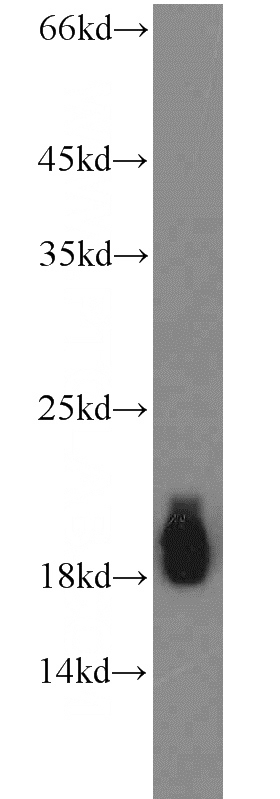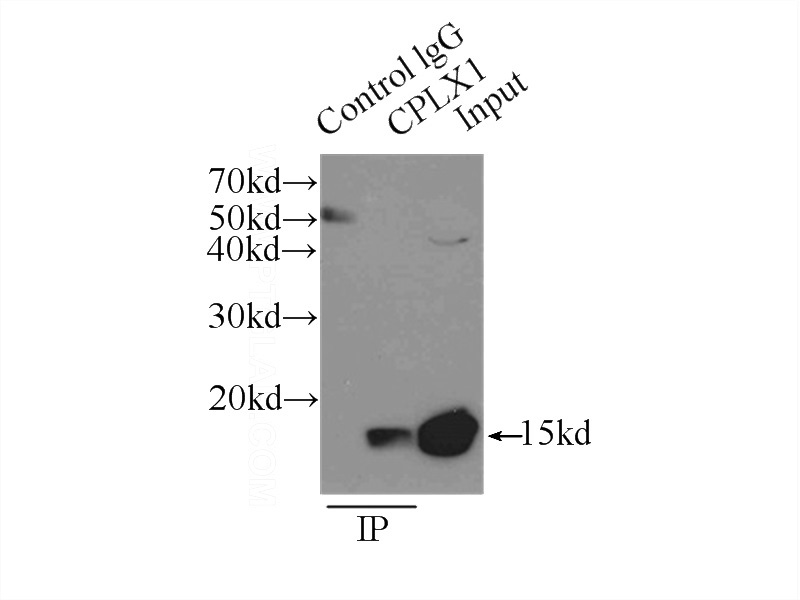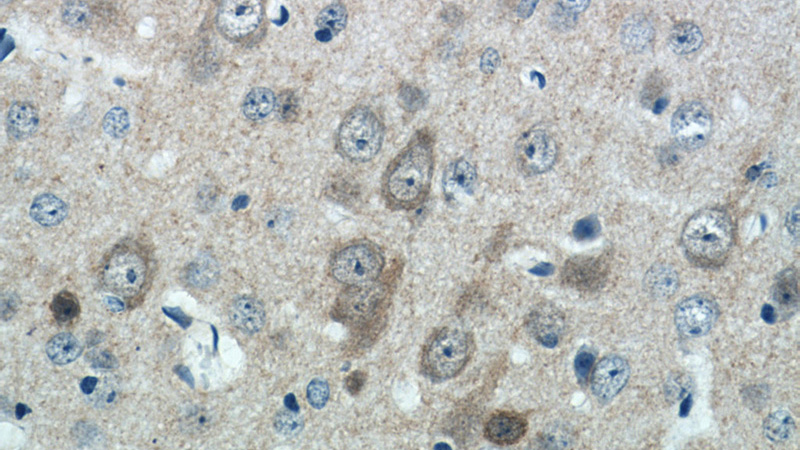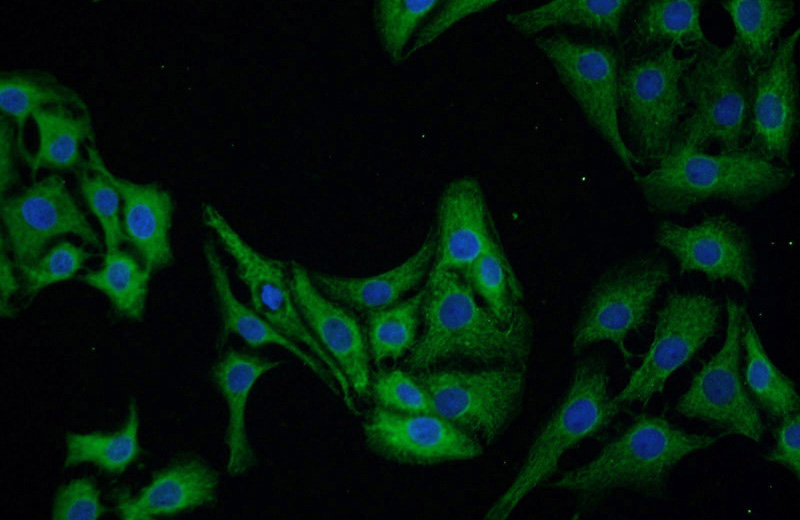-
Product Name
CPLX1 antibody
- Documents
-
Description
CPLX1 Rabbit Polyclonal antibody. Positive WB detected in mouse brain tissue, rat brain tissue. Positive IP detected in mouse brain tissue. Positive IF detected in SH-SY5Y cells. Positive IHC detected in mouse brain tissue. Observed molecular weight by Western-blot: 15-20 kDa
-
Tested applications
ELISA, WB, IP, IHC, IF
-
Species reactivity
Human,Mouse,Rat; other species not tested.
-
Alternative names
complexin 1 antibody; Complexin I antibody; complexin1 antibody; CPLX1 antibody; CPX I antibody; CPX1 antibody; Synaphin 2 antibody
- Immunogen
-
Isotype
Rabbit IgG
-
Preparation
This antibody was obtained by immunization of CPLX1 recombinant protein (Accession Number: NM_006651). Purification method: Antigen affinity purified.
-
Clonality
Polyclonal
-
Formulation
PBS with 0.1% sodium azide and 50% glycerol pH 7.3.
-
Storage instructions
Store at -20℃. DO NOT ALIQUOT
-
Applications
Recommended Dilution:
WB: 1:500-1:5000
IP: 1:200-1:1000
IHC: 1:20-1:200
IF: 1:10-1:100
-
Validations

mouse brain tissue were subjected to SDS PAGE followed by western blot with Catalog No:109509(CPLX1 antibody) at dilution of 1:1500

IP Result of anti-CPLX1 (IP:Catalog No:109509, 3ug; Detection:Catalog No:109509 1:200) with mouse brain tissue lysate 6500ug.

Immunohistochemistry of paraffin-embedded mouse brain tissue slide using Catalog No:109509(CPLX1 Antibody) at dilution of 1:50 (under 40x lens)

Immunofluorescent analysis of SH-SY5Y cells using Catalog No:109509(CPLX1 Antibody) at dilution of 1:25 and Alexa Fluor 488-congugated AffiniPure Goat Anti-Rabbit IgG(H+L)
-
Background
Complexin 1 (CPLX1) is a member of the complexin/synaphin gene family, which are cytosolic proteins that function in synaptic vesicle exocytosis. Complexins are enriched in neurons where they colocalize with syntaxin and SNAP-25. Complexins bind weakly to syntaxin alone and not at all to synaptobrevin and SNAP-25, but strongly to the SNAP receptor-core complex composed of these three molecules. Compexins also compete with alpha-SNAP for binding to the core complex but not with other interacting molecules, including synaptotagmin I, and regulate the sequential interactions of alpha-SNAP and synaptotagmins with the SNAP receptor during exocytosis. CLPX1 binds to the SNAP receptor complex and disrupts it, leading to the release of transmitters. Alterations of complexins may contribute to the molecular substrate for abnormalities of neural connectivity in severe mental disorders.
-
References
- Webster MJ, Elashoff M, Weickert CS. Molecular evidence that cortical synaptic growth predominates during the first decade of life in humans. International journal of developmental neuroscience : the official journal of the International Society for Developmental Neuroscience. 29(3):225-36. 2011.
- Wang Z, Wei X, Liu K. NOX2 deficiency ameliorates cerebral injury through reduction of complexin II-mediated glutamate excitotoxicity in experimental stroke. Free radical biology & medicine. 65:942-51. 2013.
- Siegert S, Seo J, Kwon EJ. The schizophrenia risk gene product miR-137 alters presynaptic plasticity. Nature neuroscience. 18(7):1008-16. 2015.
Related Products / Services
Please note: All products are "FOR RESEARCH USE ONLY AND ARE NOT INTENDED FOR DIAGNOSTIC OR THERAPEUTIC USE"
